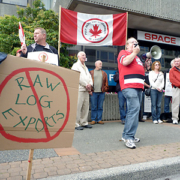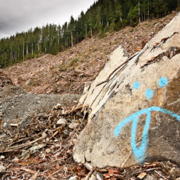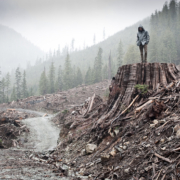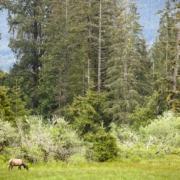Here’s what B.C. needs to do to save forestry
As a publicly owned resource, British Columbia’s forests must be harvested in a manner that pro-motes sustainability and healthy forests that are ecologically diverse. This would protect and promote existing and new jobs in communities dependent on well-managed forests. Here, then, are the principal recommendations of the Pulp, Paper and Woodworkers of Canada (PPWC):
FOREST INVENTORY
The PPWC demands the B.C. government take an inventory of our working forestland base to determine what the annual allowable cut would be. This will be done with a goal of long-term sustainability and future silvicultural needs, using the best science avail-able. It will take into account climate change, industry and community needs, as well as a social contract for land use to be developed with input from all stakeholders. The contract must have a goal of zero wood waste as this waste leads to lost job opportunities in both the traditional forest products industry and the emerging bio-economy. Zero tolerance for wood waste beyond the woody debris that should be left behind at logging sites to ensure soil and water protection.
The PPWC calls for a politically independent chief forester to be appointed in consultation with the previously mentioned stakeholder group.
EXPORT LANGUAGE
The B.C. Forests Ministry, along with labour, industry and communities, must develop a strategy that moves industry away from the current escalating dependence on log exports. This would then promote tertiary, secondary and value-added industries within our province. On the coast, we must promote a second-growth strategy that integrates protected old-growth areas as well as a new milling strategy for that second growth. The initiatives to end log exports must come from governments and forest-dependent communities. The PPWC has always and will continue to advocate for the export of manufactured products, not raw logs.
DEALING WITH PINE BEETLE FALL DOWN IN ANNUAL ALLOWABLE CUT
Rather than ignoring the fall down in timber supply within beetle-infested areas, we must put a strategy in place that will lessen the impact on directly affected communities.
To meet these goals, government needs to appoint a permanent forest commissioner’s office to be funded out of a portion of provincial stump-age fees and assigned responsibility for working directly with affected communities, First Nations, the provincial forest service and the industry to identify top reforestation priorities and to guide public investments in restoring forest health.
This office would also have responsibility for administering a retraining program. The PPWC will not support moving into parks and protected areas to address timber shortfalls. This does not address the long-term issue of fall down in the annual allowable cut.
FSC CERTIFICATION
It must be the stated goal of government, industry, and community forests to achieve Forest Stewardship Council certification across British Columbia within three years.
ENERGY SECTOR COMPETITION
With the increased competition for fibre from the energy sector, its requirement must also be addressed. The highest-value use of the resource must always be of paramount importance in terms of providing jobs, stable communities and functioning ecosystems.
Priority needs to be given to solid wood production and the “fallout” from the solid wood industry be the source of wood fibre and jobs in the pulp and paper industry as well as the emerging bioenergy industry. The government must work with existing or new wood-manufacturing plants to achieve that necessary balance.
The prospects for growth and employment opportunities in the forest sector and in their communities are bleak without a healthy land base. The PPWC encourages the government to look at these recommendations and to recognize that the need for investment in the land base and in workers is imperative.
Arnold Bercov is national forest resource officer with the Pulp, Paper and Woodworkers of Canada. Stuart Blundell is national environment officer with the union.
Read more: https://www.vancouversun.com/life/Here+what+needs+save+forestry/6939269/story.html





